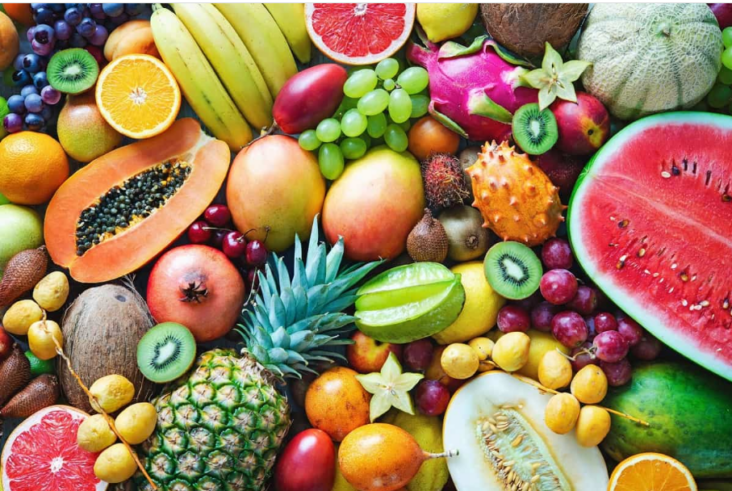There’s nothing (naturally) sweeter than biting into a juicy peach or sprinkling strawberries on your morning oatmeal. But for people with diabetes, there can be some confusion over how much of that fruity sweetness they can enjoy while keeping their blood sugar in check.
But the natural fructose and glucose found in fruit is very different from added sugars found in sweets like ice cream, cookies, and soft drinks, Fruit provides important vitamins and minerals, and it also has fibre in it, which delays how quickly the food is going to be digested, so the glucose will enter your bloodstream more slowly.
The American Diabetes Association recommends limiting high-carbohydrate foods (which includes fruit) to one-quarter of your plate, or about 2 to 3 servings of fruit per day. Choose whichever fruit you love. Here are some fruits to enjoy if you have diabetes and how much to eat for one healthy serving.
1Berries
Whether you love blueberries, strawberries, or any other type of berry, you have the go-ahead to indulge. According to the experts, berries are a diabetes superfood because they’re packed with antioxidants and fibre. One cup of fresh blueberries has 84 calories and 21 grams (g) of carbohydrates, according to the U.S. Department of Agriculture (USDA). If you can resist the urge to just pop them into your mouth, try berries in a parfait, alternating layers of fruit with plain nonfat yoghurt it makes a great dessert or breakfast for diabetes.
2 Apples
There are many types of apples that have various benefits. Some might offer more hydration; others might have a better texture.
Apples are not just nutritious and filling; According to a study, they are significantly associated with a lower risk of type 2 diabetes if consumed in moderation. Turns out there is a truth in the old saying, “An apple a day keeps the doctor away”, after all!
In general, though, there are no apples that are better or worse for a diabetic. “Apples that you would find in the supermarket or are widely available are fine. Just try to choose smaller ones
3 Peaches
Like pears and apples, peaches have edible skin that provides fibre. Another benefit is that they’re convenient and delicious.
They very grab and go. You don’t have to cut them and peel them. You just wash it and then take it with you, and you can bite right into it. So that makes it very user-friendly, and that’s important.”
4 Pears
Pears can be very tasty and are a great fruit to eat if you have diabetes. Their nutritional benefits can actually help you manage the condition, as many studies indicate. Pears also have a low glycemic index, so they won’t raise your blood glucose too quickly.
Fruits with edible skins and peels, like pears, are great sources of fibre. Fibre can help with blood sugar management and regulation and can leave you feeling satisfied.
5 bananas
One medium banana (about 126 grams) contains 29 grams of carbs and 112 calories. The carbs are in the form of sugar, starch, and fibre.
If you have diabetes, being aware of the amount and type of carbs in your diet is important.
This is because carbs raise your blood sugar level more than other nutrients, which means they can greatly affect your blood sugar management.
When blood sugar levels rise in people without diabetes, their bodies produce insulin. This helps move sugar out of the blood and into cells, where it’s used or stored.
When picking a banana from the bunch, go for one that’s still slightly on the greener side, this is because as the banana ripens, its sugar content increases.
6 Oranges
This citrus fruit is full of fibre that helps slow down sugar absorption into the bloodstream, and its vitamin C component helps improve immunity levels.
Eat one orange and you’ll get 78 per cent of the vitamin C you need in a day (there is 70 mg of vitamin C in one medium fruit). This refreshing choice comes in at only 15 g of carbohydrates and 62 calories. And while you’re enjoying this juicy treat, don’t forget that other citrus fruits, like grapefruit, are also great choices.
7 Cherries
Cherries may one day be part of diabetes treatment. The sweet and tart versions of the fruit contain chemicals that boost insulin, which helps control blood sugar levels
While you’ll want to skip the sugar-soaked maraschino ones that get plopped on top of ice cream, plump and juicy fresh cherries are loaded with antioxidants, which can help regulate blood sugar, making them a great choice.
8 Kiwi
If you’ve never tried a kiwi, you may not know that its fuzzy brown peel hides a zesty bright green fruit. According to the experts, one delicious, powerhouse kiwi has 215 mg of potassium 64 mg of vitamin C and 2 g of fibre.
One kiwi also has about 42 calories and 10 g of carbohydrates, so it’s a smart addition to your diabetes-friendly diet. Kiwis are available year-round and will last in the refrigerator for up to seven days.
9 Apricots
Apricots are extremely high in antioxidants that neutralize free radicals, or harmful compounds that damage your cells, in turn lowering your oxidative stress. Oxidative stress has been linked to several chronic conditions, including heart disease and diabetes.
Similar to apples, pears, and peaches, apricots also have a skin that provides fibre and can help manage blood sugar levels.
10 Grapefruit
Drinking grapefruit juice improved insulin sensitivity, for many people, reduced insulin sensitivity can be a sign of impending diabetes. Grapefruit juice lowers blood sugar as effectively as metformin, a drug widely used to treat people with type 2 diabetes.
Like oranges, grapefruits are also a good source of hydration and vitamin C. What’s tricky about the grapefruit though, is maintaining good portion control.
Unlike with the orange, it’s going to be more difficult to find ones on the smaller end. In this case, half of a medium-sized grapefruit is sufficient.
Bottom Line
Whether you have diabetes or not, fruit is your friend. Branch out from apples and bananas, and eat a variety of fruits, especially blue, red, and purple fruits like berries, which are high in antioxidants and raise blood sugar the least. Try not to eat fruit alone. Pair it with healthy fat like nuts or nut butter to slow digestion and the rise of blood sugar. Consume dried fruits and fruit juice in moderation, and if you have diabetes, remember to count the total grams of carbohydrates, not just the grams of sugar.







GIPHY App Key not set. Please check settings